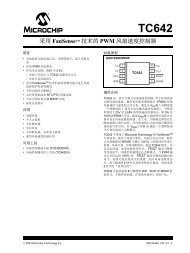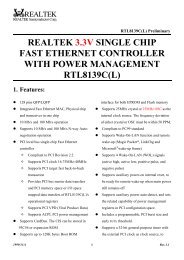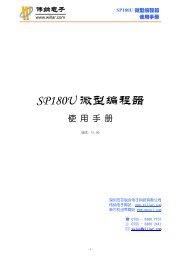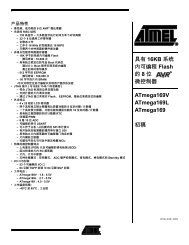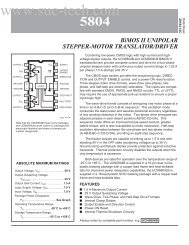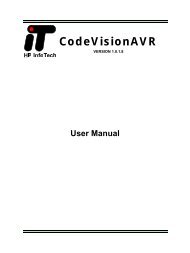Nios II Processor Reference Handbook
Nios II Processor Reference Handbook
Nios II Processor Reference Handbook
You also want an ePaper? Increase the reach of your titles
YUMPU automatically turns print PDFs into web optimized ePapers that Google loves.
Functional DescriptionFigure 7–1. An Example System Using Multiple PIO CoresAltera FPGACPUPIO core(output only)4LEDsAvalon Switch FabricIRQPIOcore Edge(input Captureonly)ResetrequestlogicProgramand DataMemoryPIOcore(bidirectional)11LCDdisplayWhen integrated into an SOPC Builder-generated system, the PIO corehas two user-visible features:■■A memory-mapped register space with four registers: data,direction, interruptmask, and edgecapture.1 to 32 I/O ports.The I/O ports can be connected to logic inside the FPGA, or to device pinsthat connect to off-chip devices. The registers provide an interface to theI/O ports via the Avalon interface. See Table 7–2 on page 7–7 for adescription of the registers. Some registers are not necessary in certainhardware configurations, in which case the unnecessary registers do notexist. Reading a non-existent register returns an undefined value, andwriting a non-existent register has no effect.Data Input & OutputThe PIO core I/O ports can connect to either on-chip or off-chip logic. Thecore can be configured with inputs only, outputs only, or both inputs andoutputs. If the core will be used to control bidirectional I/O pins on thedevice, the core provides a bidirectional mode with tristate control.7–2 Altera Corporation<strong>Nios</strong> <strong>II</strong> <strong>Processor</strong> <strong>Reference</strong> <strong>Handbook</strong> September 2004



